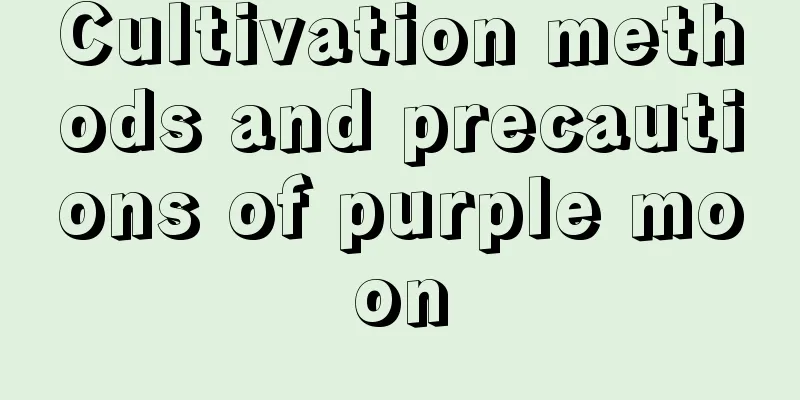Cultivation methods and precautions of purple moon

Breeding methods and precautionsPurple Moon likes warm environment and plenty of sunshine, avoid exposure to the sun, prefers water, and is in a semi-dormant state in the hot summer. There are three ways to propagate Purple Moon: cuttings, sowing and division. Generally, in order to increase the survival rate, cuttings are used for propagation. It is extremely easy to survive. Its peak season for propagation is in early spring and late autumn, so choosing these two time periods for propagation will be twice as effective. The suitable growth temperature of Purple Moon is between 15-28 degrees, but the temperature in winter cannot be lower than 10 degrees; fertilize once a month during its growing period; keep it dry during the growing period and water it in a cycle; the soil can be a mixture of vermiculite, perlite and peat. The leaves of the purple moon tree are quite special. They will change from green to purple-red when there is plenty of sunlight. The small yellow flowers, when paired with their own purple color, become very gorgeous and eye-catching. If you find that it is short of water and the leaves become shriveled, water it moderately and they will become plump the next day. Purple Moon Plant does not need much water in the early stage of rooting. After the roots are completely combined with the soil, it will grow explosively. Its growth rate is also considered to be the fastest among the hanging varieties of succulents. The best growing period for Purple Moon is in spring and autumn. It is extremely easy to maintain and likes a humid environment. Do not let the soil be in a dry state for a long time, otherwise the leaves will dry up and wither quickly; but do not let the soil be stuffy and wet in summer. |
Recommend
How many years does it take for bergamot to bear fruit?
Introduction to Growing Bergamot Bergamot is gene...
Boxwood cutting propagation methods and precautions
Boxwood propagation method Boxwood is mainly plan...
When is the best time to water garlic during the winter?
During the wintering of garlic , correct irrigati...
When does the rhododendron bloom?
1. Its flowering period This plant comes in many ...
Cultivation methods and precautions of Sichuan Michelia
1. Soil Michelia glabra has fleshy roots, so it h...
How to grow saffron in autumn
1. Maintenance methods Autumn is an important tim...
How to switch from hydroponics to soil cultivation
How to transfer hydroponic plants to soil culture...
How to care for asparagus fern in winter
Is asparagus fern afraid of freezing? Asparagus f...
When do tulips bloom? How to care for them after they bloom?
1. When do tulips bloom? Tulips usually bloom bet...
When does yellow orchid bloom?
1. Flowering time Generally speaking, yellow orch...
How to prune Kalanchoe after it blooms
1. Time Selection After the flowers have bloomed,...
Which one is easier to grow, dahlia or dahlia, and is more suitable for growing at home?
The biggest difference between dahlia and lily is...
What are the varieties of big cherries?
1. Early Ruby Early Ruby was bred in Ukraine. The...
It is best to water mint every few days.
Water mint every few days Mint requires less wate...
The difference between calla lily and dripping guanyin, pictures of dripping guanyin
1. Leaf Difference 1. The leaves of calla lily ar...









